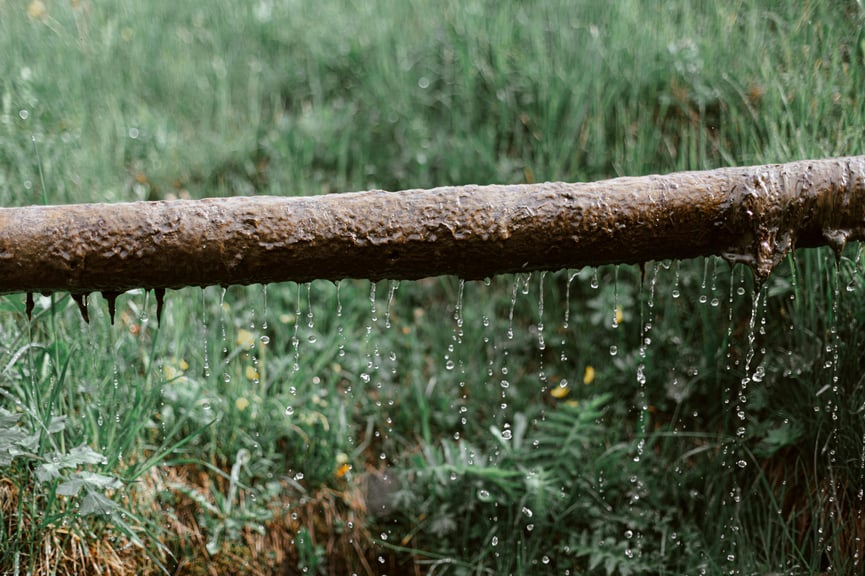This blog post is a translation of JDN’s article, “Chez Saur, les fuites d'eau sont stoppées par l'IA.”
Nearly 25% of the drinking water produced in France is lost through water leaks. "This waste is due to aging pipes," explains Christophe Orceau, CTO of Kurrant, a consulting firm specialized in the digitalization of cities and utilities, which supports numerous local authorities. It's against this backdrop that the Saur Group, a player in the management of water and sanitation services in France and internationally, decided in 2021 to develop an algorithm capable of defining a criticality index for drinking water supply pipes. Its aim:
To enable the identification of pipes responsible for water leaks and help improve network performance.
– Grégory Denis, Chief Data Officer, Head of AI Developments, Saur
To develop this index and determine how AI can add value to its skills and services, Saur called on Dataiku, a French-founded company specialized in data science and AI, at the end of 2021.
"The advantage of this partner is that it facilitates collaboration between different business contacts and enables end-to-end project implementation, from the exploratory phase to the production release of algorithms, without breaking the software environment. What's more, the intellectual property of what is developed remains the exclusive property of Saur," explains Grégory Denis.
The project was implemented at the beginning of 2022 and has been progressively extended to the whole of France. "The difficulty is often access to quality data and standardized formats. Fortunately, the datahub previously set up by the Saur Group accelerated the project," testifies Amaury Delplancq, Dataiku's Vice President for Southern Europe. Saur can now look forward to deploying the solution on a group-wide scale.

Millions of Lines of Data Analyzed by AI
To identify water leaks, Dataiku's machine learning solution analyzes various types of data and intervenes at several levels. As a start, it relies on the completeness of data from patrimonial analyses of the network managed by Saur, which are based on the age of pipes and the presence of progressive flow opening equipment to avoid hydraulic jolts or data from connected equipment, such as communicating meters, particularly at night when flows are supposed to be practically nil.
The algorithms also analyze data on the volume of water distributed and consumed, the nature of the soil, and geo-risk data to identify soil movements. Satellite data and operational intervention data are also integrated. All in all, millions of lines are scanned by AI. The network operator is in the process of adding to this service the visualization of sectorized yields thanks to the mass of volumetric information reprocessed by big data to automatically complete missing or aberrant data.
250,000 Linear Kilometers of Drinking Water Analyzed
AI can also be used to quickly locate leaks and guide operational staff in the field. Another use for this algorithm is to determine how best to invest in the renewal of water assets.
The idea is to guide investments towards lines that will improve network performance.
– Grégory Denis.
Saur manages 250,000 linear kilometers of drinking water for some 20 million people. AI results integrated into mobile applications display recommendations to Saur teams based on a ten-year history of repairs. The first results enabled by AI: "Identifying the 10% of pipes responsible for a third of leaks is a real time-saver for localization," enthuses Grégory Denis.
To take leak detection a step further, the Saur Group is working on using AI to detect transient pressure phenomena, also known as water hammer, in a pipeline. "These are hydraulic jolts that occur when a valve or pump is restarted in a non-progressive manner. When these phenomena occur, they generate stress on the pipes. With this algorithm, we'll soon be able to spot them without changing current pressure-sensing equipment, and help preserve equipment lifespan," details Saur's CDO. "Our platform is agnostic in terms of usage, allowing us to work on water quality management afterwards, for example," adds Amaury Delplancq.
AI combined with IoT is thus asserting itself as a real asset in water management. "Technology is an obvious way of anticipating any problem, such as water shortages", asserts Christophe Orceau, CTO of Kurrant, who is not involved in this Saur Group project but has, as an expert, a good view of the market. An opinion shared by Grégory Denis: "AI and big data integrate very well into water business processes and bring value to hydraulic skills."
This leak detection project is not the only one undertaken by the Saur Group. Through its subsidiary ImaGeau, the drinking water supplier has already developed AI to predict groundwater and surface water levels. Currently, teams are cross-referencing drinking water consumption predictions with groundwater recharge predictions. Another example is Saur's work on detecting drifts in reservoir filling. The next step will be to develop Generative AI for tender responses and monitoring contractual commitments in a 100% secure LLM environment.
Through use linked to network performance, Saur is demonstrating the usefulness of AI in its businesses. And there's still a lot to be done across the entire water cycle. "After the water tables, the second step is to monitor pumping, an activity that consumes a lot of energy and that we can optimize. And after leak detection on the distribution network, AI and IoT can intervene in wastewater treatment and recycling," lists Christophe Orceau. Through its Sterau subsidiary, the group has engineering expertise in the design and construction of wastewater treatment plants. Extending the uses of AI is an obvious idea.




